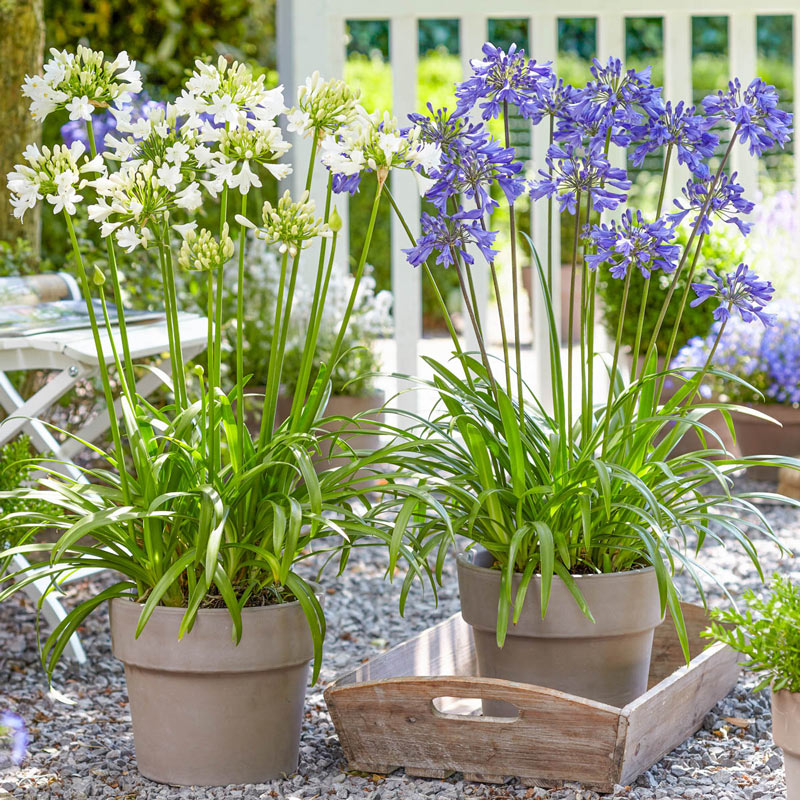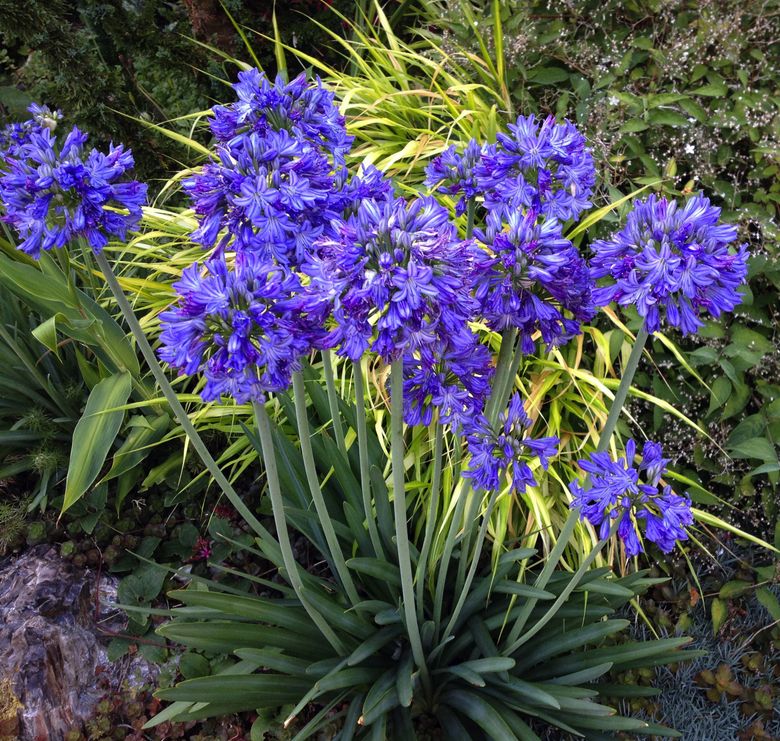Releasing the Secret to Effective Agapanthus Growing: Idea for a Flourishing Garden
In the world of gardening, growing agapanthus effectively needs a strategic strategy that incorporates various aspects of plant treatment. By comprehending the subtleties of agapanthus growing, one can create a setting where these plants prosper and flower abundantly.
Growing Agapanthus: Finest Practices
When planting Agapanthus, correct soil prep work is crucial for making sure effective growth and development of these attractive flowers. Agapanthus, generally called Lily of the Nile or African lily, prospers in well-draining soil with a somewhat acidic to neutral pH level - Agapanthus. Prior to planting, it is vital to amend hefty clay soils with organic matter such as garden compost or peat moss to boost drainage and give vital nutrients for the plants
To grow Agapanthus, pick a place that gets complete sunlight to partial color, as this will promote healthy and balanced development and bountiful flowering. Dig a hole twice the size of the plant's root sphere and position the Agapanthus at the exact same depth it was previously expanding. Carefully backfill the opening with dirt, pushing down firmly to eliminate any kind of air pockets around the roots.
Water the newly planted Agapanthus completely and remain to keep the soil uniformly wet, specifically during the plant's active growing season. Agapanthus. Applying a balanced fertilizer once a month can additionally support the plant's growth and flowering. By following these finest methods for growing Agapanthus, you can develop a stunning display screen of these exciting blossoms in your garden
Suitable Dirt Issues for Agapanthus
For optimum growth and blooming success of Agapanthus plants, guaranteeing the soil problems are ideal is important. Agapanthus grows in well-draining dirt with a slightly acidic to neutral pH level ranging from 6.0 to 7.0. This kind of soil permits appropriate water drain, preventing waterlogging which can result in root rot. To improve soil water drainage, take into consideration including natural issue such as garden compost or peat moss when preparing the growing site. In addition, Agapanthus favors dirt that is abundant in nutrients, so including a well balanced fertilizer during the growing season can advertise healthy and balanced development and vibrant blooms.

Watering and Feeding Tips
To guarantee healthy growth and lively flowers, correct watering and feeding methods are crucial for effective Agapanthus growing. Agapanthus plants click here for more info benefit from regular watering, particularly during the growing season.
When it comes to feeding Agapanthus, a well balanced plant food with equivalent parts nitrogen, phosphorus, and potassium can be applied in the springtime to advertise healthy growth and blooming. Slow-release fertilizers are perfect for providing nutrients progressively over a prolonged duration. Prevent over-fertilizing, as this can result in extreme vegetation growth at the expenditure of flowers.
Additionally, incorporating raw material like compost right into the dirt can enhance nutrient degrees and improve soil framework, helping in the overall wellness of the Agapanthus visit this website plants. By complying with these watering and fertilizing pointers, gardeners can guarantee their Agapanthus plants grow and create stunning display screens of flowers.
Trimming and Deadheading Strategies
Appropriate trimming and deadheading methods play an essential duty in preserving the health and aesthetics of Agapanthus plants, complementing the crucial methods of watering and feeding for successful growing. Pruning Agapanthus entails eliminating invested flower heads, yellowing or dead fallen leaves, and overall shaping of the plant to advertise far better growth. Deadheading, the procedure of removing faded flowers, not just boosts the plant's look but likewise encourages additional blooming.
When deadheading Agapanthus, it is a good idea to snip off the blossom stem at the base utilizing sharp, tidy shears. This procedure redirects the plant's energy from seed manufacturing back right into root and vegetation growth, promoting a healthier and much more durable plant. Normal deadheading can extend the flowering period of Agapanthus and stop self-seeding, which can bring about overcrowding.
In terms of pruning, Agapanthus typically take advantage of a light trim after blooming to clean up the plant and urge fresh development. Reducing the invested blossom stems and getting rid of any kind of damaged or dead vegetation aids keep the plant's vitality and total look. Nevertheless, it is necessary to prevent reducing into my latest blog post the crown of the plant, as this can compromise its health.

Protecting Agapanthus From Vermins and Diseases
Carrying out effective bug and disease administration strategies is vital to protecting the wellness and vitality of Agapanthus plants in cultivation. One typical pest that impacts Agapanthus is the Agapanthus borer, a caterpillar that passages into the plant, triggering damages to the blossoms and fallen leaves.
In enhancement to bugs, Agapanthus are at risk to illness such as root rot and fungal leaf spots. By staying watchful and dealing with insect and condition problems immediately, garden enthusiasts can help their Agapanthus thrive and flourish.

Conclusion
To conclude, effective growing of agapanthus calls for proper growing techniques, suitable dirt conditions, appropriate watering and feeding, normal pruning and deadheading, and security from parasites and diseases. By following these tips and methods, gardeners can make certain a flourishing garden filled up with beautiful agapanthus blossoms. Agapanthus. Bear in mind to maintain consistent care and focus to information to advertise the wellness and longevity of these magnificent plants
When planting Agapanthus, appropriate soil prep work is crucial for guaranteeing effective growth and development of these beautiful flowers.Water the recently planted Agapanthus completely and proceed to maintain the soil uniformly damp, particularly throughout the plant's energetic expanding season.For ideal growth and blooming success of Agapanthus plants, making certain the soil conditions are optimal is vital. When growing or transplanting Agapanthus, guarantee the dirt is well-prepared to offer the needed structure for the plants to develop themselves effectively. One typical bug that influences Agapanthus is the Agapanthus borer, a caterpillar that passages right into the plant, causing damages to the leaves and blossoms.
 Jonathan Taylor Thomas Then & Now!
Jonathan Taylor Thomas Then & Now! Ross Bagley Then & Now!
Ross Bagley Then & Now! Melissa Joan Hart Then & Now!
Melissa Joan Hart Then & Now! Tonya Harding Then & Now!
Tonya Harding Then & Now! Heather Locklear Then & Now!
Heather Locklear Then & Now!